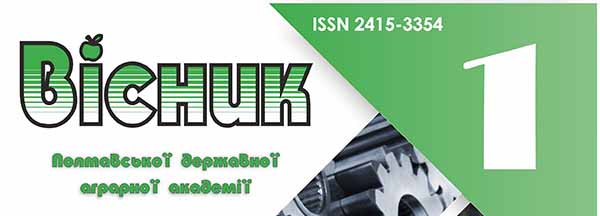WINTER WHEAT (TRITICUM AESTIVUM L.) MUTATION CHANGES SPECTRUM UNDER GAMMA-RAYS ACTION
DOI:
https://doi.org/10.31210/visnyk2021.04.04Keywords:
winter wheat, gamma-rays, mutations spectrum, mutagenesisAbstract
The aim of our research was to identify the parameters of mutational activity of different doses of gamma-rays for winter wheat varieties of local breeding according to the spectrum of induced mutational changes in the second-fourth generation. The parameters of the mutational variability spectrum in winter wheat of local breeding varieties (Commertsiyna and Spivanka) in the second-fourth generation were studied. The experiments were conducted in the research fields of the research center of Dnipro State Agrarian and Economic University. The seeds of Spivanka and Commetsiyna varieties, irradiated with gamma-rays in doses of 100, 150, 200, 250, 300 Gy, were used in the experiments. Dry seeds were used as control. It has been established that a positive mutation process is essential for such traits as semi-dwarfism (for certain genotypes) and dwarfism; it has been proved that it is a reliable constant source of using variability for locally bred genetic resources for some economically-valuable traits to obtain modern highly intensive, productive, highly adaptive prospective forms. The regularity of the mutation process in positive directions has been shown, which allows make the process of using this type of variability to obtain new material with the necessary potential, more manageable and reliably prognostic. The expediency of using mainly moderate doses of 100–150 Gy for the local material with a partial possibility of a dose of 200 Gy was proved. Higher mutational activity in terms of the frequency of changes is characteristic for Commertsiyna variety, but for Spivanka the overall level of variability is higher, due to a significant expansion of the range of required changes. The key parameters in the mutational variability of winter wheat are the mutations in stem height, mutations in wax coating, and terms of ripeness. Other variants are medium- and low-probable, but it is worth noting the assessment of variability according to such characteristics as high stem, low stem, semi-dwarf, intensive wax coating, weak wax coating, awned ear, awnless ear, long ear, large ear, sterility, late ripening, early ripening, bushiness, productive, speltoid spike to model the process of activity of mutagenic factors.

 Creative Commons Attribution 4.0 International Licens
Creative Commons Attribution 4.0 International Licens